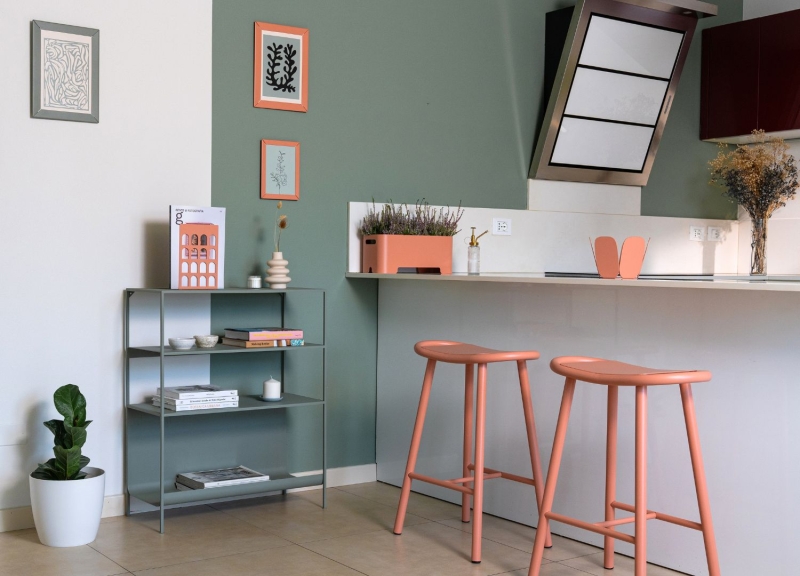Contents
- 1 An interview with Manuele Perlati, the Italian company’s founder, who is crafting a new model that rethinks design as a collective act.
- 2 What sparked the idea to create a design company that is so community-driven?
- 3 Walk us through the process of how a product makes it into Hiro’s design catalogue.
- 4 Hiro is deeply tied to Made in Italy manufacturing, can you tell me more about that?
- 5 How do you balance the compromise between Hiro’s very defined aesthetics with community-led design?
- 6 Do you think the design industry is moving towards higher accessibility, or is there still a long way to go?
An interview with Manuele Perlati, the Italian company’s founder, who is crafting a new model that rethinks design as a collective act.
In a design world still too obsessed with visual novelty and niche luxury, HIRO Design cuts through the noise. The Italian company’s approach is rooted in the principles of democratic design, and is guided by their community, which has the power to decide which products they desire to be made. Designing not only for real people and their needs, but also with them, HIRO provides a refreshing stance that distances itself from conventional design processes.
We spoke to Manuele Perlati, HIRO’s founder, about their design philosophy, and what it means to create furniture that’s truly essential, not just in form, but in purpose.
HIRO Design
What sparked the idea to create a design company that is so community-driven?
Manuele Perlati:
“We began as manufacturers, already equipped with all the technical and structural expertise needed to create, package, and ship furniture. What we perhaps lacked was a ‘creative spark.’ So we decided to collaborate with creatives by opening our factory and providing our capabilities and resources to foster innovative design concepts. This is how HIRO was officially born: a bridge between our manufacturing solidity and the collective imagination of the designer community.”

HIRO Design
Walk us through the process of how a product makes it into Hiro’s design catalogue.
Manuele Perlati:
“The process always begins with a Call for Ideas. Promising projects are collaboratively developed with designers, both emerging and established, leading to prototyping. Subsequently, the community plays a pivotal role by voting on finalists and determining which designs proceed to production. This embodies our core belief that ‘design is a matter of choice’ and should be a shared decision. It’s a circular, transparent, democratic and collective process. And the beauty of it is that the final product tells a story, and it’s not just the vision of a single author or brand, but something much broader.”

HIRO Design
Hiro is deeply tied to Made in Italy manufacturing, can you tell me more about that?
Manuele Perlati:
“We are always proud to say that HIRO is a 100% Italian brand. We produce everything in Badia Calavena (Verona) where we’ve recently also internalized woodworking processes. This approach allows us to maintain direct control over quality and timelines, while also honoring the artisan craftsmanship that has always been at the heart of the Made in Italy tradition. At a time when many companies are outsourcing, we have chosen to invest in our country—both out of conviction and because we believe that the true value of our products derives from this commitment.”

HIRO Design
How do you balance the compromise between Hiro’s very defined aesthetics with community-led design?
Manuele Perlati:
“We don’t actually see it as a compromise, it’s more of a perfect balance. HIRO’s visual identity is strong and recognizable: minimal, essential and colorful. It’s through our interaction with the community that we are able to strengthen it. From the beginning, we set a clear direction. The first objects in our catalog established the HIRO style, and we continue to define it through product briefs and direct commission projects. Community involvement is then built upon this foundation. Every object emerges from the intersection of our aesthetic language and the needs of the people who connect with our world. The result is a collection that is coherent yet never rigid. It proves that design can be a collaborative effort without sacrificing stylistic consistency.”

HIRO Design
Do you think the design industry is moving towards higher accessibility, or is there still a long way to go?
Manuele Perlati:
“Something is definitely shifting. Perhaps for too long, design has been perceived as something elitist, reserved for a select few. From the very beginning, we wanted to challenge that narrative by offering high-quality products at an accessible price, and, more importantly, by directly involving the public. Accessibility isn’t just about economics; it’s also about culture. It means opening the doors of the creative process, giving a voice to those who usually remain on the sidelines, and fostering a sense of belonging. And that, perhaps, is the most meaningful shift we’re seeing.”

